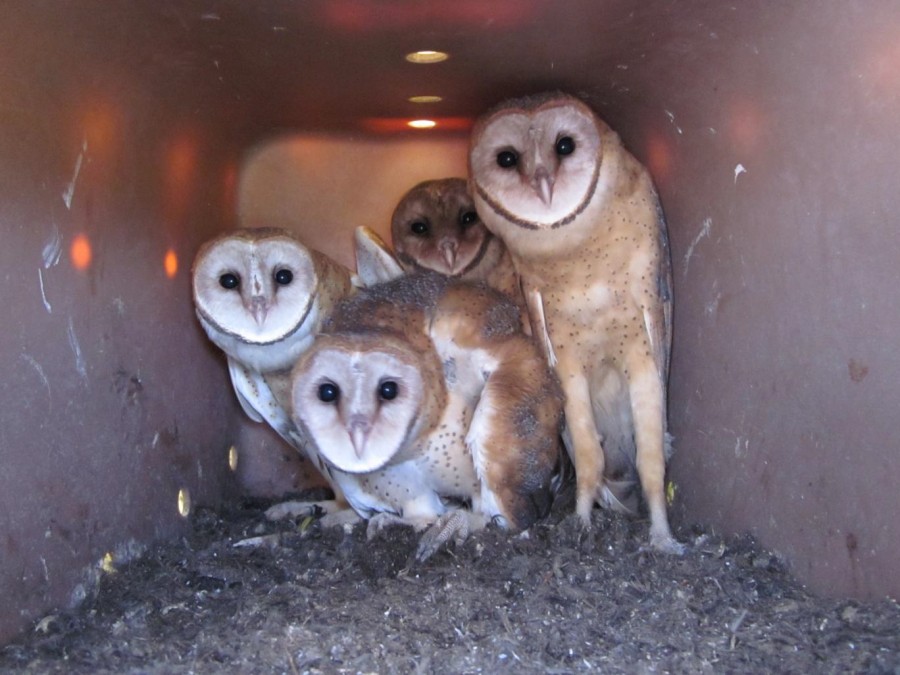Protecting Endangered Nature In The Prairie State
By Jerome McDonnell

Protecting Endangered Nature In The Prairie State
By Jerome McDonnellThis planet we’re on has a lot going for it. But it also has a lot of challenges — like changing climates, warming waters and disappearing species. A recent United Nations report on biodiversity warns that about a million plants and animals across the globe are threatened with extinction.
In Illinois alone, there are plenty: 480 species have the unwanted distinction of making this state’s official endangered species list.
But it turns out, in Illinois, we also have an state-authorized Endangered Species Protection Board. Never heard of it? Most of us haven’t. And if so few of us know whether and how we protect endangered plants and animals, how is protection possible?
I drove down to Midewin Tallgrass Prairie near Joliet to find out. That’s where the Endangered Species Protection Board was wrapping up its once-every-five-years effort to review and update Illinois Endangered Species List. There were no other media there. Nor was anyone from the general public.

Created by the 1972 Illinois Endangered Species Act, the board is made up of volunteer zoologists, ecologists and least one botanist appointed by the governor.
Those volunteers have spent the last several years pulling together their endangered species update. As I noted earlier, the current list has 480 species; 325 are plants. I recognized only a few of the species. But I learned a ton.
The board members in each discipline convene technical advisory committees and talk with top experts and knowledgeable amateurs in their area. In the end, 18 species in the state moved to more endangered positions on the list, and 24 moved into better positions. Most species stayed put where they were.
One success story is a pretty well-known species with a striking heart-shaped white face: the barn owl. It was practically a charter member of the Illinois Endangered Species List when it went on in 1977. At the time, barn owl populations in the Midwest were plunging despite being numerous the world over. The culprits were monoculture farming, toxic pesticides and fewer barns suitable for nesting — think big metal enclosures.
A bit of background: When a species like the barn owl goes on the list, the goal is to develop a strategy to get it off. The state body spearheading the effort is the Illinois Department of Natural Resources. Jeff Walk of The Nature Conservancy was on the Endangered Species Protection Board and helped draw up the barn owls’ recovery plan in 2010. He’d seen other states succeed by installing barn owl houses in restored grasslands where plenty of mice and voles were available. It looked like the same thing could work here. Volunteers helped buy, assemble and monitor the houses. When the nest boxes went up, Walk says he saw “a really rapid increase in the number of documented nesting attempts, going from the single digits on a meteoric rise to a high count of 70 nests in 2017.”
It was great to hear the barn owl has now officially come off the endangered species list, but the challenges they overcame seem easy and almost old-fashioned compared to what’s facing a new species on the list this year.
After the ESP board members had approved the new list and ate Subway sandwiches (on their own dime), I talked with ichthyologist and board member Philip Willink about a small, threatened fish, the mottled sculpin.
Willink says the mottled sculpin can tell us a lot about the intersection of ecology and climate change.

In the interconnected web of ecology, one disappearing species may be food for another species. Its loss can endanger other species. And like the proverbial canary in the mineshaft, an endangered fish also is a warning of environmental conditions — like warming waters — that are unsustainable to life.
The mottled sculpin had been ubiquitous in Lake Michigan, but an aggressive invader from the Caspian Sea, the round goby, has pushed the sculpin out. It hasn’t been seen in Lake Michigan for a few years. The mottled sculpin also is the victim of Illinois rivers that Willink says are warming from climate change and development. The sculpin needs cool waters to thrive, and along two Illinois rivers, the Des Plaines and Rock Rivers, the sculpin can only be found near two cold springs. In the Fox River, its population is stable, but building development is a constant threat in that area.
This year, for the first time, the mottled sculpin goes on the state of Illinois’ official endangered list as “threatened,” with no easy plan for recovery.
The disappearance of this overlooked little fish underscores the importance of the state’s endangered species list and all the unnoticed but vital species on it.
Jerome McDonnell covers the environment and climate for WBEZ. You can follow him @JeromeMcDonnell.